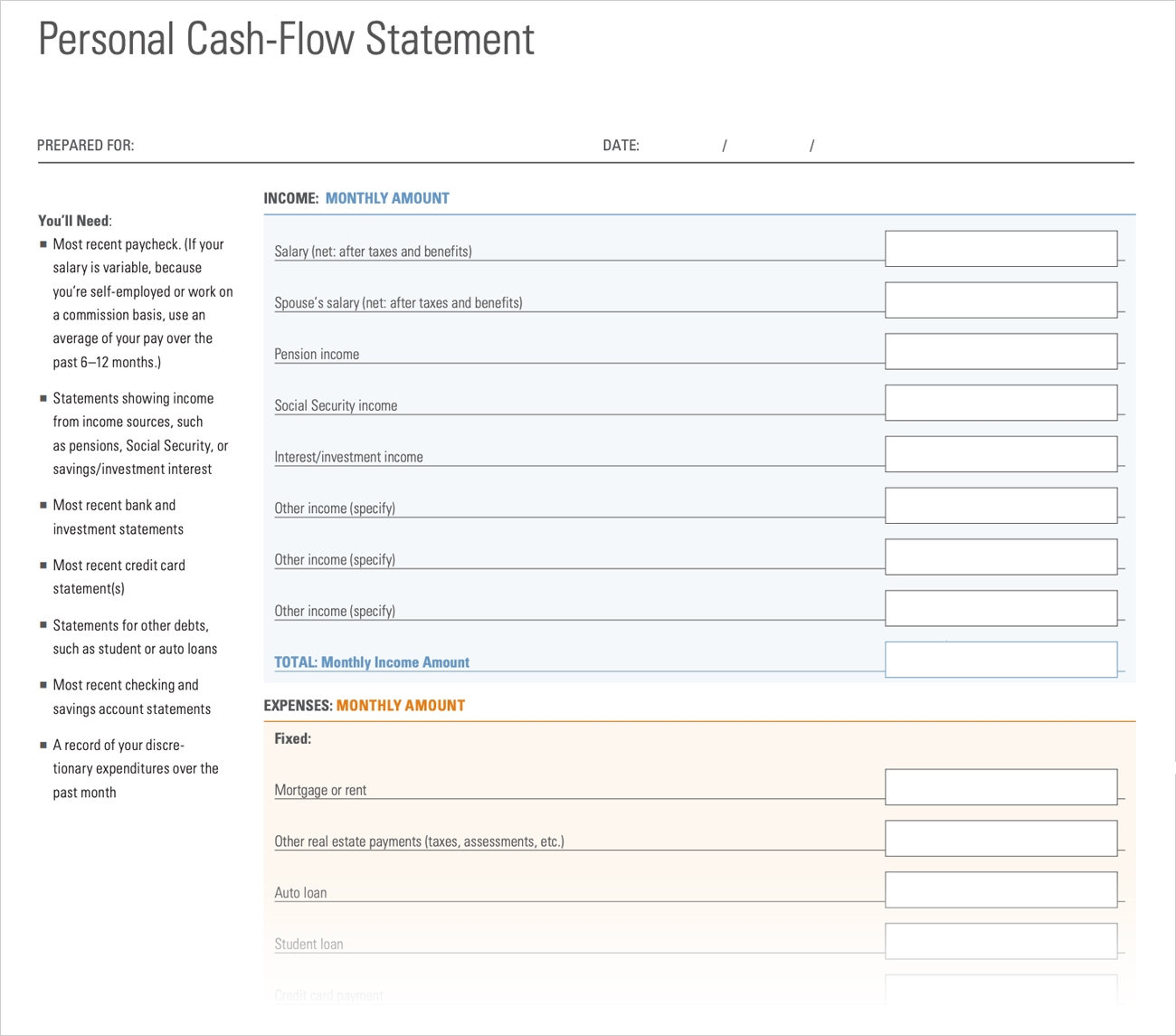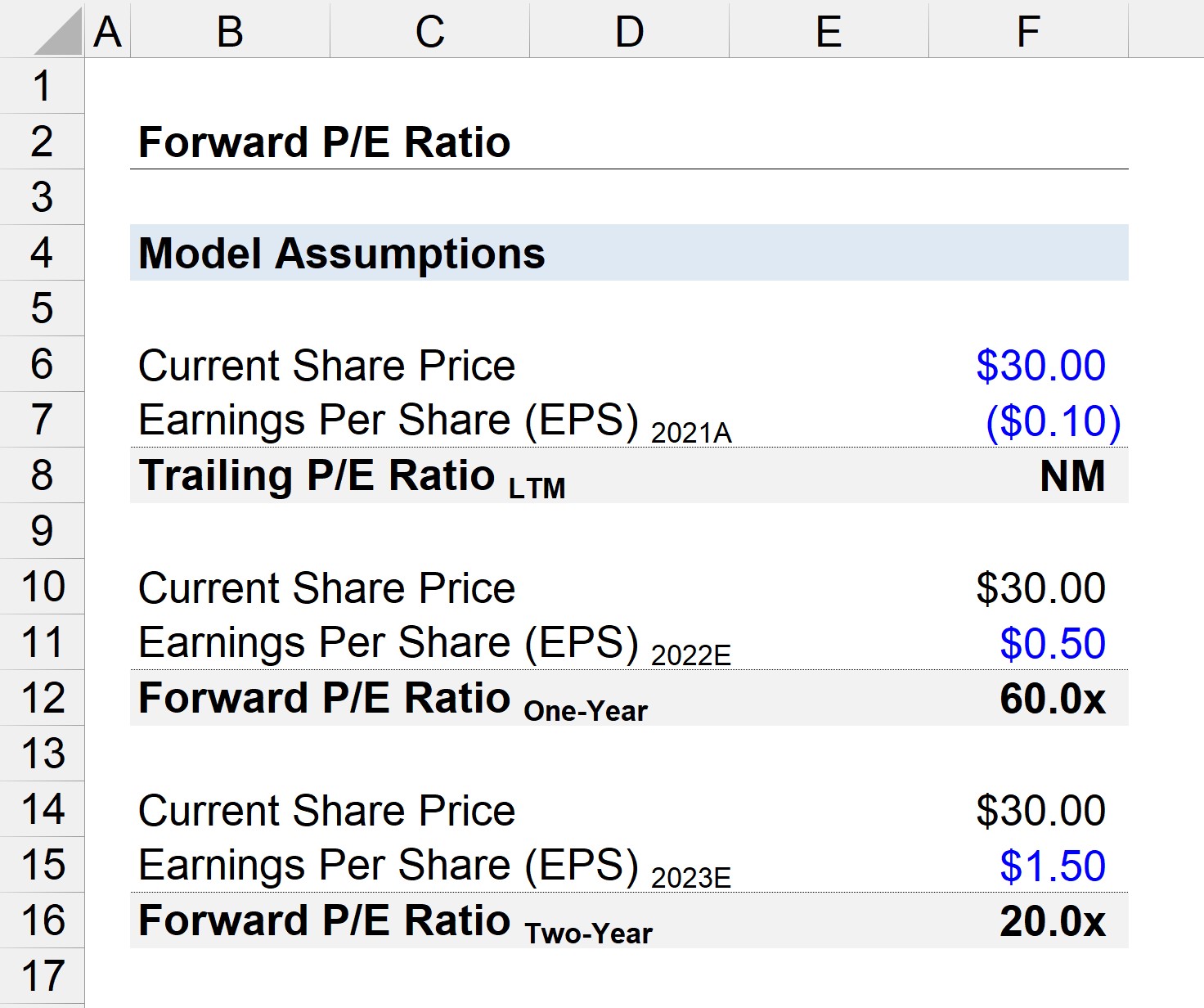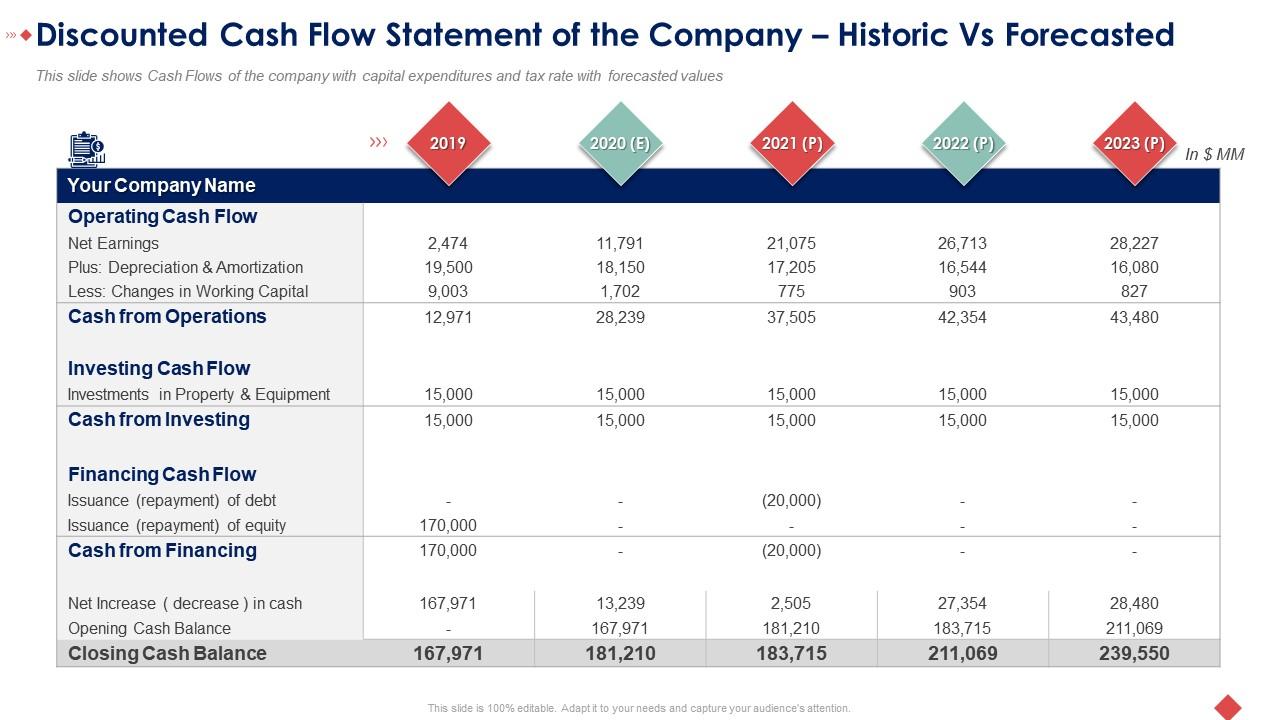

Finance
How To Find Cash Flow To Stockholders
Modified: February 21, 2024
Learn how to find cash flow to stockholders and improve your finance knowledge with our comprehensive guide.
(Many of the links in this article redirect to a specific reviewed product. Your purchase of these products through affiliate links helps to generate commission for LiveWell, at no extra cost. Learn more)
Table of Contents
Introduction
Welcome to the world of finance, where understanding and managing cash flow is key to the success of any business. Cash flow is often referred to as the lifeblood of a company, as it represents the movement of money in and out of a business over a specific period of time. While various types of cash flow exist, one crucial aspect that companies and investors focus on is cash flow to stockholders.
In this article, we will delve into the concept of cash flow to stockholders, its importance, how to calculate it, factors that affect it, strategies to increase it, and common pitfalls to avoid in managing it. Whether you are a business owner, an investor, or simply someone curious about the financial world, understanding cash flow to stockholders will provide you with valuable insights into the financial health and performance of a company.
Cash flow to stockholders, sometimes referred to as dividends, represents the cash that a company generates and distributes to its stockholders or shareholders. This distribution can be in the form of dividends or share repurchases. By examining the cash flow to stockholders, investors can assess the return they are receiving on their investment and make informed decisions about holding, buying, or selling a company’s stock.
Furthermore, cash flow to stockholders is a critical metric for businesses as it reflects their ability to generate profits and reward investors. It is an indicator of the financial stability and sustainability of a company, as well as its commitment to providing value to its stockholders.
Throughout this article, we will explore the significance of cash flow to stockholders, how to calculate it, factors that influence it, strategies to improve it, and the potential pitfalls to avoid. By the end, you will have a comprehensive understanding of cash flow to stockholders and be equipped with the knowledge to effectively manage it.
Understanding Cash Flow to Stockholders
Cash flow to stockholders, also known as dividends, refers to the cash that a company generates and distributes to its stockholders or shareholders. This distribution can take the form of cash dividends or stock repurchases. It is important to note that not all companies distribute cash to their stockholders, as some may reinvest it back into the business for expansion or other purposes.
The primary purpose of cash flow to stockholders is to provide a return on investment to the company’s shareholders. It is a way for the company to reward its shareholders for their ownership and support. By receiving cash flow to stockholders, shareholders can earn income from their investment in the company.
There are two main components of cash flow to stockholders:
- Dividends: Cash payments made to shareholders on a regular basis as a reward for holding company stock. Dividends can be in the form of a fixed amount per share or a percentage of profits.
- Stock Repurchases: When a company buys back its own shares from shareholders, usually on the open market. This reduces the number of outstanding shares and increases the ownership percentage of the remaining shareholders.
Understanding the cash flow to stockholders is crucial for investors as it allows them to assess the return they are receiving on their investment. It helps investors make informed decisions about whether to hold, buy, or sell a company’s stock. By analyzing the cash flow to stockholders, investors can determine the financial health and performance of a company.
For companies, cash flow to stockholders represents their ability to generate profits and reward their shareholders. It is an indicator of financial stability and sustainability. A company that consistently generates positive cash flow to stockholders demonstrates its commitment to providing value to its stockholders and its ability to generate profits.
It’s important to note that cash flow to stockholders should not be considered in isolation. It should be analyzed in conjunction with other financial metrics and indicators to gain a comprehensive understanding of a company’s financial performance. Factors such as revenue growth, profitability, debt levels, and future cash flow projections should also be taken into account when evaluating the overall financial health of a company.
Now that we have a basic understanding of cash flow to stockholders, let’s move on to the importance of this metric in finance.
Importance of Cash Flow to Stockholders
Cash flow to stockholders is a vital metric in finance that holds significant importance for both companies and investors. Understanding the importance of cash flow to stockholders allows businesses to make informed decisions and investors to assess the financial health of a company. Let’s explore the key reasons why cash flow to stockholders is important:
1. Return on Investment: Cash flow to stockholders provides a direct return on investment for shareholders. By distributing cash in the form of dividends or stock repurchases, a company rewards its shareholders for their ownership and support. This return on investment is essential for investors who rely on their investments to generate income and build wealth.
2. Indicator of Financial Stability: Consistent positive cash flow to stockholders indicates a company’s financial stability. It demonstrates that the company has sufficient funds to meet its obligations, including the distribution of profits to stockholders. This stability is a crucial factor for investors seeking long-term investments and indicates a well-managed and financially healthy company.
3. Evaluation of Management Efficiency: The ability to generate and manage cash flow to stockholders reflects the efficiency and effectiveness of a company’s management team. A positive cash flow to stockholders indicates that the company’s management is successful in generating profits, controlling costs, and ensuring adequate returns for shareholders. This metric is often used by investors as a gauge of management’s performance.
4. Comparison with Competitors: Comparing cash flow to stockholders among industry peers allows investors to assess a company’s performance relative to its competitors. Investors can use this data to determine whether a company is effectively utilizing its resources and generating returns that are in line with industry standards. It provides insights into which companies are more profitable and more successful in rewarding their stockholders.
5. Dividend Yield: Cash flow to stockholders is directly related to the dividend yield of a company’s stock. Dividend yield is calculated by dividing the annual dividend by the stock price. A higher cash flow to stockholders can lead to higher dividend payouts and, consequently, a higher dividend yield. Dividend yield is an important consideration for income-focused investors who rely on regular dividend payments for their financial needs.
Understanding and analyzing cash flow to stockholders is crucial for both companies and investors. It allows businesses to assess their financial stability, reward shareholders, and demonstrate effective management. For investors, it serves as a valuable tool to evaluate the financial health and performance of a company, determine their return on investment, and make informed investment decisions.
Next, we will explore how cash flow to stockholders is calculated to provide a more comprehensive understanding of this metric.
Calculating Cash Flow to Stockholders
Calculating cash flow to stockholders involves determining the cash that a company distributes to its stockholders in the form of dividends or stock repurchases. This metric provides valuable insights into a company’s financial performance and its ability to reward shareholders. Let’s explore the methods of calculating cash flow to stockholders:
1. Dividends: To calculate cash flow to stockholders based on dividends, you need the following information:
- The total dividends paid to stockholders during a specific period.
- The number of outstanding shares of the company’s stock.
Divide the total dividends paid by the number of outstanding shares to get the cash flow to stockholders based on dividends per share. For example, if a company paid $1 million in dividends and has 1 million outstanding shares, the cash flow to stockholders based on dividends per share would be $1 per share.
2. Stock Repurchases: Calculating cash flow to stockholders based on stock repurchases requires the following information:
- The total value of stock repurchased by the company.
Simply use the total value of stock repurchases as the cash flow to stockholders based on repurchases. For example, if a company repurchased $2 million worth of its own stock, the cash flow to stockholders based on repurchases would be $2 million.
It’s important to note that companies may distribute cash to stockholders through both dividends and stock repurchases. In such cases, you can calculate the total cash flow to stockholders by aggregating the cash flow from dividends and stock repurchases.
For example, if a company paid $1 million in dividends and repurchased $2 million worth of its own stock, the total cash flow to stockholders would be $3 million.
Calculating cash flow to stockholders plays a crucial role in evaluating a company’s financial health and performance. Monitoring this metric over time can help investors assess the consistency and stability of cash distributions, as well as identify trends and patterns in a company’s dividend policy.
It’s important to interpret cash flow to stockholders in conjunction with other financial metrics, such as revenue, profitability, and debt levels. This comprehensive analysis provides a more accurate understanding of the overall financial position and performance of a company.
Next, we will explore the various factors that can impact cash flow to stockholders.
Factors Affecting Cash Flow to Stockholders
Cash flow to stockholders can be influenced by a variety of factors that impact a company’s ability to generate and distribute cash to its shareholders. Understanding these factors is essential for investors and businesses alike to assess the stability and sustainability of cash flow to stockholders. Let’s explore some of the key factors that can affect cash flow to stockholders:
1. Profitability: The profitability of a company is a significant determinant of its ability to distribute cash to stockholders. Higher profits generally lead to more cash available for dividends or stock repurchases, resulting in increased cash flow to stockholders. Companies with consistent and growing profits are more likely to generate higher cash flow to stockholders.
2. Cash Reserves: The amount of cash reserves a company holds can impact its cash flow to stockholders. Companies with larger cash reserves are better positioned to distribute cash to stockholders, even during times of economic uncertainty or business downturns. Adequate cash reserves provide a buffer to ensure consistent cash flow to stockholders.
3. Debt Obligations: Companies with significant debt obligations may have less cash available to distribute to stockholders. Debt repayments consume a portion of the company’s cash flow, reducing the amount available for dividends or stock repurchases. It is essential for companies to manage their debt levels effectively to maintain a healthy cash flow to stockholders.
4. Investment Opportunities: Companies that identify attractive investment opportunities may choose to reinvest their cash instead of distributing it to stockholders. These investments could include research and development, expansion projects, or acquiring other companies. While reinvesting cash can drive future growth, it can also reduce the current cash flow to stockholders.
5. Industry Conditions: The specific industry in which a company operates can impact its cash flow to stockholders. Some industries, such as technology or healthcare, require significant investments in research and development, limiting the available cash for stockholder distributions. In contrast, industries with established business models and stable cash flows may have higher cash flow to stockholders.
6. Regulatory and Legal Considerations: Regulatory and legal factors can also impact cash flow to stockholders. Compliance requirements, tax regulations, and legal restrictions on stock repurchases or dividend payments can restrict a company’s ability to distribute cash to stockholders. It is essential for companies to understand and comply with these regulations to avoid any negative impact on their cash flow to stockholders.
7. Economic Environment: The overall economic environment, including factors such as interest rates, inflation, and consumer spending, can impact a company’s cash flow to stockholders. Economic downturns or recessions may result in lower profitability and reduced cash flow, potentially affecting a company’s ability to distribute cash to stockholders.
These are just a few of the key factors that can influence cash flow to stockholders. It’s important for investors and businesses to carefully analyze these factors and assess their impact on a company’s ability to generate and distribute cash to stockholders.
In the next section, we will explore strategies that businesses can employ to increase their cash flow to stockholders.
Strategies for Increasing Cash Flow to Stockholders
Increasing cash flow to stockholders is a primary goal for businesses as it demonstrates financial strength and rewards shareholders for their investment. To enhance cash flow to stockholders, companies can implement various strategies that aim to generate higher profits and optimize the distribution of cash. Here are several strategies that businesses can employ:
1. Revenue Growth: Increasing revenue is a fundamental approach to boosting cash flow to stockholders. Companies can achieve revenue growth through strategies such as expanding customer base, entering new markets, launching new products or services, or improving marketing and sales efforts. Higher revenue translates into higher profits and ultimately leads to increased cash available for distribution to stockholders.
2. Cost Management: Efficient cost management can have a significant impact on cash flow to stockholders. By controlling expenses and implementing cost-saving measures, companies can improve profit margins and generate more cash for distribution. This can include optimizing supply chain operations, negotiating better vendor contracts, or streamlining internal processes to reduce overhead costs.
3. Dividend Policy: Reviewing and adjusting the dividend policy can optimize cash flow to stockholders. Companies can consider increasing or decreasing dividend payouts based on financial performance, cash reserves, and growth prospects. A well-balanced dividend policy that aligns with the company’s financial goals and provides consistent and predictable returns to stockholders can positively impact cash flow.
4. Share Repurchases: Utilizing share repurchases is another strategy to increase cash flow to stockholders. By buying back shares from the market, companies reduce the number of outstanding shares, thereby increasing the ownership percentage of existing stockholders. This can lead to higher earnings per share and potentially boost the stock price, enhancing overall cash flow to stockholders.
5. Debt Restructuring: Restructuring debt obligations can free up cash flow to stockholders. Negotiating better terms with creditors, refinancing debt at more favorable interest rates, or extending repayment periods can reduce the burden of debt repayments and increase the amount of cash available for stockholder distributions.
6. Expansion into New Markets: Exploring opportunities to expand into new markets can stimulate growth and cash flow. By identifying untapped markets or diversifying into related industries, companies can capture new revenue streams that contribute to increased cash flow. However, expanding into new markets requires careful planning and market research to ensure successful penetration.
7. Operational Efficiency: Improving operational efficiency can unlock hidden cash flow potential. This can involve implementing lean practices, enhancing production processes, optimizing inventory management, or adopting automation technologies to streamline operations and reduce costs. Increased operational efficiency results in higher profits, which can be distributed to stockholders.
8. Technology Investments: Embracing technology investments can facilitate higher productivity and profitability, ultimately increasing cash flow to stockholders. Implementing innovative software systems, digital platforms, or automation tools can optimize business operations, reduce costs, and improve customer experiences, leading to enhanced financial performance.
These strategies can be implemented individually or in combination, depending on the specific needs and goals of a company. It’s important for businesses to evaluate their financial position, industry dynamics, and market conditions when determining the most effective strategies for increasing cash flow to stockholders.
In the next section, we will highlight common pitfalls that businesses should avoid in cash flow management.
Common Pitfalls to Avoid in Cash Flow Management
Effective cash flow management is crucial for businesses to maintain financial stability and ensure a steady stream of cash flow to stockholders. However, there are common pitfalls that companies should be aware of and avoid to optimize their cash flow management. Let’s explore some of these pitfalls:
1. Inadequate Cash Reserves: Failing to maintain sufficient cash reserves can be detrimental to cash flow management. Businesses should anticipate unexpected expenses, economic downturns, or cash flow disruptions to avoid running into liquidity issues. Insufficient cash reserves can lead to missed dividend payments, reduced cash flow to stockholders, and potential financial distress.
2. Overreliance on Debt: Relying too heavily on debt financing can strain cash flow management. High levels of debt repayment can limit the cash available for stockholder distributions. It’s important to strike a balance between debt and equity financing to maintain healthy cash flow and avoid excessive interest payments.
3. Ineffective Cost Control: Failing to control costs can impact cash flow negatively. Uncontrolled expenses, wasteful spending, or inefficient processes can eat into cash reserves and hinder cash flow to stockholders. Regularly reviewing and optimizing costs is essential for maintaining healthy cash flow.
4. Insufficient Profitability: Low profitability or inconsistent earnings can impede cash flow to stockholders. Without sufficient profits, there may not be enough cash available for stockholder distributions. Companies should focus on improving profitability through revenue growth, cost management, and strategic decision-making.
5. Neglecting Working Capital Management: Poor management of working capital can strain cash flow management. Inefficient inventory management, extended accounts receivable cycles, or excessive accounts payable can tie up cash and disrupt the timing of stockholder distributions. Businesses should prioritize effective working capital management to ensure optimal cash flow.
6. Ignoring Cash Flow Forecasting: Failing to forecast cash flow can lead to surprises and difficulties in managing cash flow to stockholders. Businesses should regularly analyze and project their cash flow to anticipate potential shortfalls or excess liquidity. This enables proactive measures to be taken, such as adjusting spending or planning for additional capital needs.
7. Lack of Communication with Stockholders: Poor communication with stockholders can create uncertainty and hinder cash flow management. Transparent and timely communication about dividend payouts or stock repurchases is essential to maintain stockholder satisfaction and confidence. Establishing open lines of communication helps manage expectations and ensures trust in the company’s cash flow management practices.
8. Neglecting Competitive Analysis: Failing to monitor industry peers and competitors can lead to missed opportunities for increasing cash flow to stockholders. By benchmarking against industry standards, companies can identify innovative practices or strategies that could enhance their own cash flow management and boost stockholder returns.
By recognizing and avoiding these common pitfalls, businesses can optimize their cash flow management and ensure a consistent and healthy cash flow to stockholders. Regular monitoring, careful planning, and strategic decision-making are essential to mitigate these challenges and maintain a strong financial position.
In the following section, we will summarize the key points discussed in this article.
Conclusion
In conclusion, cash flow to stockholders plays a crucial role in finance, providing a measure of the cash that a company generates and distributes to its stockholders or shareholders. It serves as a return on investment for shareholders and indicates the financial stability and profitability of a company. Understanding cash flow to stockholders is essential for both businesses and investors, as it allows them to assess the financial health, performance, and commitment to shareholders.
We explored the importance of cash flow to stockholders, highlighting its significance in evaluating a company’s financial stability and return on investment for shareholders. We discussed the methods of calculating cash flow to stockholders based on dividends and stock repurchases, as well as the factors that can impact this metric, including profitability, debt obligations, industry conditions, and more.
Moreover, we outlined strategies that businesses can employ to increase cash flow to stockholders, such as focusing on revenue growth, cost management, dividend policies, stock repurchases, and operational efficiency. We also identified common pitfalls that companies should avoid, such as inadequate cash reserves, heavy reliance on debt, ineffective cost control, and neglecting cash flow forecasting.
By implementing the strategies we discussed and avoiding the pitfalls, businesses can optimize their cash flow management and ensure a steady and consistent flow of cash to stockholders. Companies need to regularly monitor their financial performance, adapt to changing market conditions, and maintain open communication with stockholders to foster trust and confidence.
For investors, understanding cash flow to stockholders enables them to evaluate the financial health of a company, assess the return on their investment, and make informed decisions about holding, buying, or selling stock.
In summary, cash flow to stockholders reflects a company’s ability to generate profits and reward its shareholders. By comprehending the nuances of this metric, businesses and investors can navigate the financial landscape with confidence and maximize their returns.














